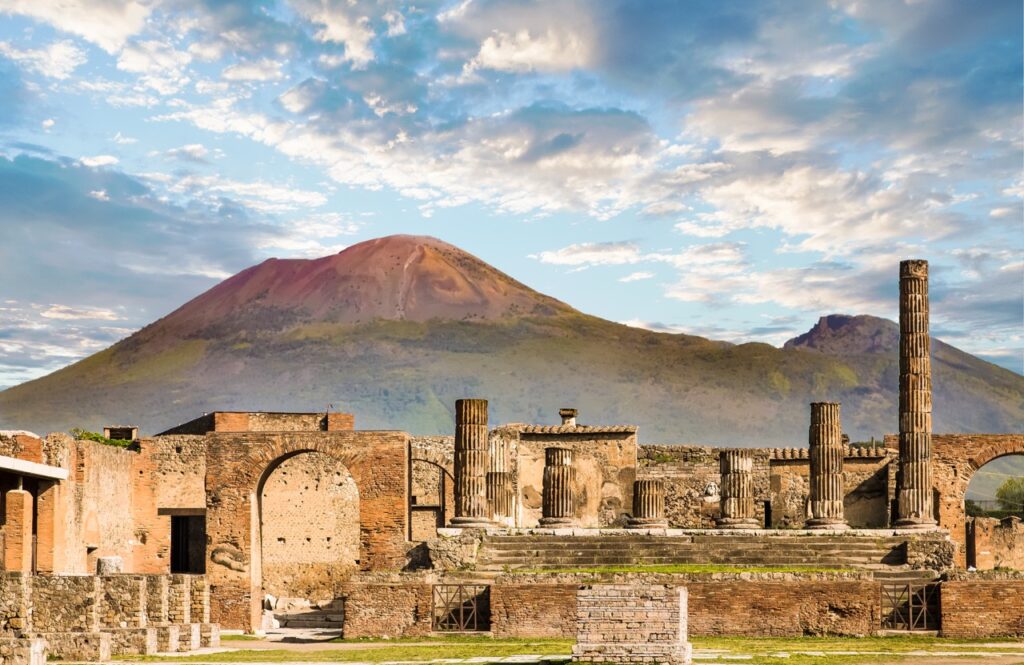Pompeii, located in the Campania region of Italy, near Naples, is one of the most fascinating historical cities in the world. It is one of the most visited archaeological sites in Italy and the world, thanks to its incredible preservation and the tragic event that made it famous: the eruption of Mount Vesuvius in 79 AD.
The Archaeological Park of Pompeii, one of the most visited historical sites in the world, located in southern Italy, announced significant changes to mitigate the impacts of mass tourism and preserve its priceless cultural heritage. Among the new measures is the limit of 20,000 visitors per day, with personalized tickets featuring the names of visitors. These changes aim not only to protect the site but also to offer a safer, more organized, and enriching experience for those who visit.

These changes are a response to the growing pressure tourism places on the archaeological site, especially after last summer, when the park received over four million visitors, a record in its history. Gabriel Zuchtriegel, director of the park, stated in a press release that the initiative aims to minimize risks for both people and cultural heritage. “We are working on a series of projects to mitigate the pressure of human activity on the site, which can pose risks, such as in the event of an earthquake, while also ensuring the preservation of this unique and fragile heritage,” he explained.
The main goal is to promote slower, more sustainable tourism, allowing visitors to have a more enriching and safe experience. The division of tickets into time slots is designed to manage the flow of people more effectively. Starting this high season, which runs from April 1 to October 31, the visiting hours will be organized as follows:
- From 9:00 AM to 12:00 PM: limit of 15,000 visitors, with 12,000 tickets for the city of Pompeii and 3,000 for tickets that include the suburban villas.
- From 12:00 PM to 5:30 PM: limit of 5,000 visitors, with 3,000 regular tickets and 2,000 for the suburban villas.
These adjustments aim to avoid overcrowding, improve visitor circulation, and protect sensitive areas of the archaeological site that are more vulnerable to wear and tear.
To facilitate access and ensure a more organized experience, tickets can be purchased both on-site and online. The cost to visit only the ancient city of Pompeii is €18. The combined ticket, which includes the suburban villas of Boscoreale, Oplontis, and Stabiae, is €22. As an incentive for cultural visitation, entry is free on the first Sunday of every month.
The park also offers a free shuttle service, the Pompeii Arte Bus, which connects Pompeii to the suburban villas. This transport contributes to a more integrated experience, allowing visitors to explore the region more fully. With this resource, it is possible to gain a broader view of Roman life and architecture in the area, enriching the understanding of the historical context.
Since July 2023, a high-speed train operated by Trenitalia directly connects Rome to Pompeii, reducing travel time between the two cities and offering more convenience to tourists. The Frecciarossa 1000 departs from Rome’s Termini station on Sundays at 8:53 AM, arriving at Pompeii station at 10:40 AM. The return trip departs at 6:40 PM, arriving in Rome at 8:55 PM. During the week, travelers must transfer at Napoli Centrale station in Naples and take a metropolitan train to Pompeii.
This new direct high-speed route also encourages day trips between Rome and Pompeii, allowing more people to explore the archaeological site without needing to stay overnight in the area. Additionally, greater accessibility promotes a more even distribution of tourist traffic throughout the day.
Located in the Campania region, Pompeii is a UNESCO World Heritage site, sharing this status with the archaeological site of Herculaneum. The city was buried by the eruption of Mount Vesuvius in 79 AD, preserving streets, amphitheaters, temples, houses, and villas that reveal details of daily life in the Roman Empire. This extraordinary preservation allows visitors to walk through the same streets as ancient Romans and explore spaces where social, cultural, and economic activities took place.
Recently, a small house adorned with frescoes was discovered in the park, offering a new perspective on how Romans decorated their homes. The frescoes depict mythological scenes and are clear examples of the artistic sophistication of the time. Discoveries like these continue to enrich knowledge about the daily life and cultural traditions of Pompeii’s inhabitants.
The new measures at the Archaeological Park of Pompeii represent a significant effort to balance tourism interest with the need to preserve one of the world’s most important historical heritages. The initiative not only protects the archaeological site but also provides visitors with a safer and more enriching experience, in line with the principles of sustainability and cultural appreciation.
With these measures, Pompeii is not only a tourist destination but also an example of how responsible and innovative management can ensure that future generations continue to marvel at the history and beauty of this unique place. By opting for more mindful tourism, visitors from all over the world have the opportunity to experience and respect Pompeii’s historical legacy, ensuring that its heritage continues to inspire and educate future generations.

